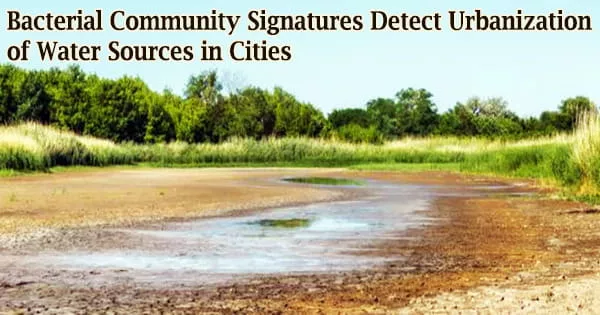Whether it be a human mouth or a lake, bacterial colonies are frequently highly adapted and durable in a certain environment. As cities and their surrounds become more urbanized, humans are changing the environment at an ever-increasing rate.
As part of the Leibniz Research Alliance “Infections,” researchers from the Leibniz Institute for Freshwater Ecology and Inland Fisheries (IGB) and the Leibniz Institute for Zoo and Wildlife Research (Leibniz-IZW) examined bacterial communities in urban water bodies and wastewater in Berlin and compared them to less anthropogenically influenced lakes from nearby rural regions. The study was published today in the journal Science of the Total Environment.
According to the findings, urbanization introduces significant amounts of nutrients, chemical pollutants, and antimicrobial products, which alters the microbiome by favoring bacterial communities that contain human pathogenic bacteria, with as-yet-unknown repercussions for ecosystem function and human and animal health.
Almost every site on the earth has its own unique natural bacterial ecosystem, whether it be an armpit, garden soil, or water. By introducing new conditions that favor certain bacterial groups over others, humans who change their habitats likewise alter the bacterial composition of those areas.
In a recent study, researchers from IGB and Leibniz-IZW as well as colleagues from other Leibniz Research Alliance members tracked these changes in bacterial composition related to the process of urbanization and showed that bacterial communities in urban waterbodies and wastewater in Berlin are noticeably different from those of rural lakes in nearby regions in the federal states of Brandenburg and Mecklenburg-Vorpommern.
In addition to introducing human bacteria (“humanization”), the process of urbanization can also introduce excessive nutrients (“eutrophication”), chemical pollutants, and antimicrobial products like antibiotics. These factors can significantly favor some bacteria over others and alter the microbiome, with as-yet-unknown repercussions for ecosystem function and human and animal health.
Surprisingly, the enriched bacterial groups in urban environments are those that often contain pathogenic species. This suggests that if a pathogen gets into such an environment, it will find a very supportive environment in which to grow.
Prof Alex Greenwood
“We wanted to know whether urban water shows signatures of urbanization that are predictive of the types of bacteria present in a given community within the city limits,” says Prof Hans Peter Grossart of the IGB, co-principle investigator of the study.
The findings suggest to a “humanization” of urban lake microbiomes by showing that numerous bacterial families are enriched in urban waters, with the worst cases being discovered in the inflows and outflows of a wastewater treatment facility.
“Surprisingly, the enriched bacterial groups in urban environments are those that often contain pathogenic species. This suggests that if a pathogen gets into such an environment, it will find a very supportive environment in which to grow,” says Prof Alex Greenwood, head of the Leibniz-IZW Department of Wildlife Diseases and co-principle investigator of the study.
Compared to rural water bodies, where such favorable conditions for infections were not typically observed, this might potentially result in epidemics there.
In order to develop more natural water ecosystems within the city, water hygiene may need to take de-urbanizing the microbiomes of city water sources into consideration. As many metropolitan areas become dryer and more fertile due to climate change, significantly altering the bacterial communities in urbanized water, this will become more difficult and crucial.
As a result of the increased potential of contamination with hazardous bacteria, this might have significant implications on both human and animal health.





